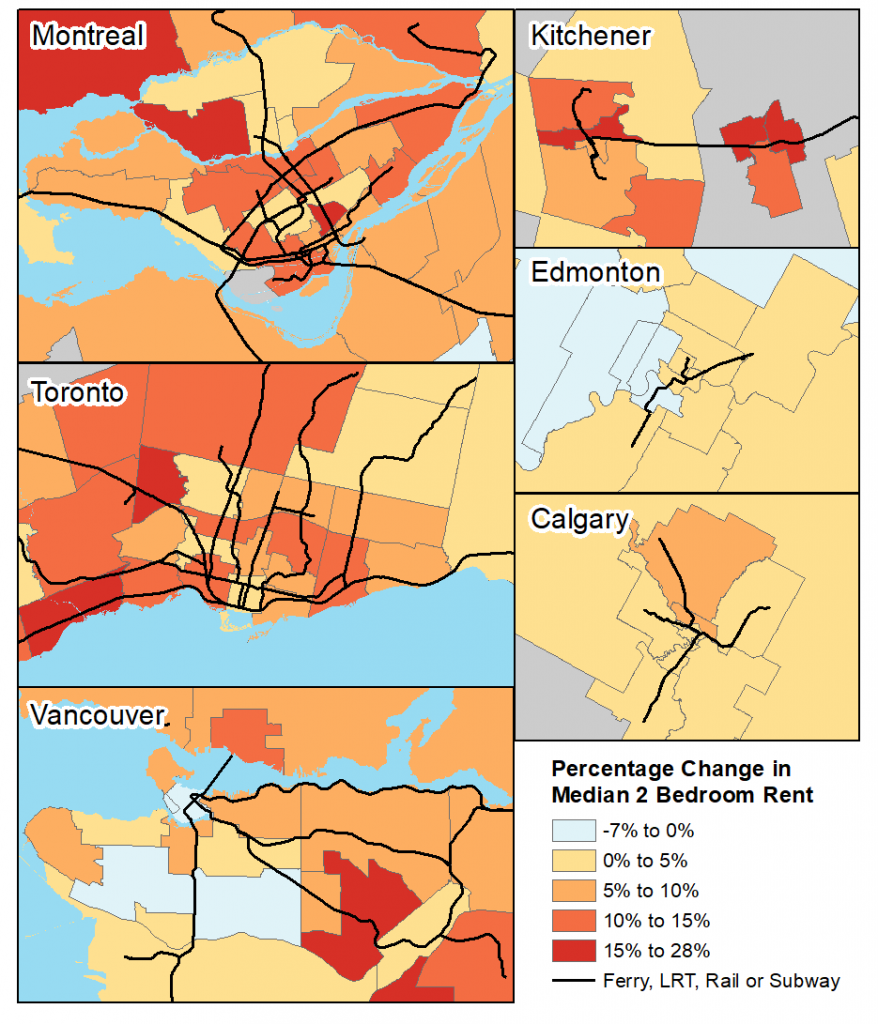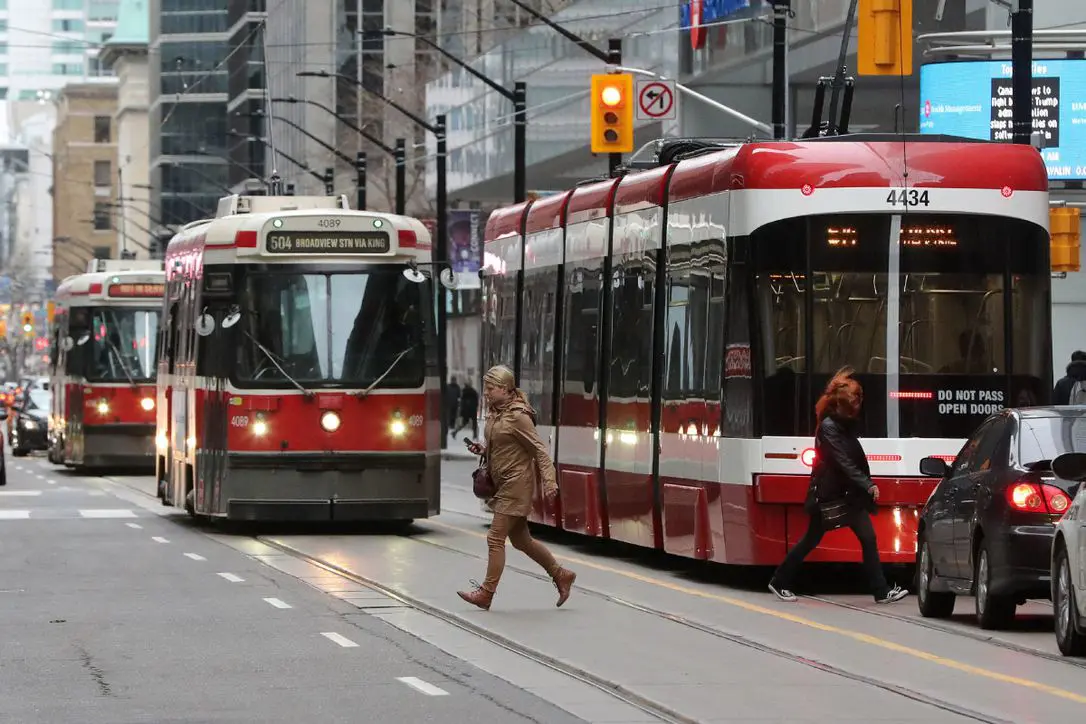Canadian cities during COVID-19: did rents go down in transit-rich neighbourhoods?
Mobilizing Justice’s Prioritizing Populations working group has a forthcoming report on the impacts of the COVID-19 pandemic on transportation inequities in Canada. As part of that work, which is due out in May 2022, we examined how the pandemic impacted housing affordability in Canadian cities.
Some research suggests that housing unaffordability is a major factor in transportation inequity in Canada, as people on low incomes and those who cannot afford a car are priced out of neighbourhoods with high levels of transit service and cycling infrastructure. The COVID-19 pandemic, however, held the potential to reverse some of these trends by shifting housing demand pressures to suburban communities. To examine this potential, Mobilizing Justice researchers mapped changes in the median rent for two bedroom apartments from the Canada Mortgage Housing Corporation’s Rental Market Survey. The source data can be found here. Taking the percent difference between October 2021 and October 2019 data, the researchers produced the following map below. The authors overlaid ferry, rail, LRT and subway lines to identify any transit-rich neighbourhoods where rental affordability might have improved.

CHMC data indicates that rents declined in only a small number of markets with rapid rail access. These include the downtown, southeast, and west side of Vancouver, and the University market area in Edmonton. Rents continued to rise in transit-rich areas elsewhere, with increases as high as 28% in markets like Plateau-Mont Royal in Montréal, and 19% in Kitchener’s west. These data tell only part of the story, as trends in apartment sales prices may show different patterns. However, renters in Canada are more likely to be on low incomes, and so examinations of rental affordability are relevant to whether people on low incomes are able to afford to live near transit infrastructure.
This map is reprinted from an upcoming Mobilizing Justice report. Want to get notified when this report, and other MJ products, become available? Sign up for our newsletter using the form at the bottom of this page.
You may also like
 The Different Price Tags of Access: Transit, Housing Affordability and Demographics
The Different Price Tags of Access: Transit, Housing Affordability and Demographics
Introduction Building a new transit system? Great for commuters. Even better for housing prices. When cities build transit, nearby land and housing prices often shoot… Read More
 Developing Standards for Equity in Transportation Planning and Policy
Developing Standards for Equity in Transportation Planning and Policy
program at McMaster University. I began my PhD in September 2023 and have been part of the PhD MJ Researchers team since then. In a… Read More
 Making Space for Grief: Innovate Approaches to Knowledge Mobilization Through Art, Placemaking, and Cross-Sector Dialogue
Making Space for Grief: Innovate Approaches to Knowledge Mobilization Through Art, Placemaking, and Cross-Sector Dialogue
Grief—often defined as the process of coping with loss—ebbs and flows throughout our lives. Despite its universality, this deeply human experience is often constrained by… Read More
